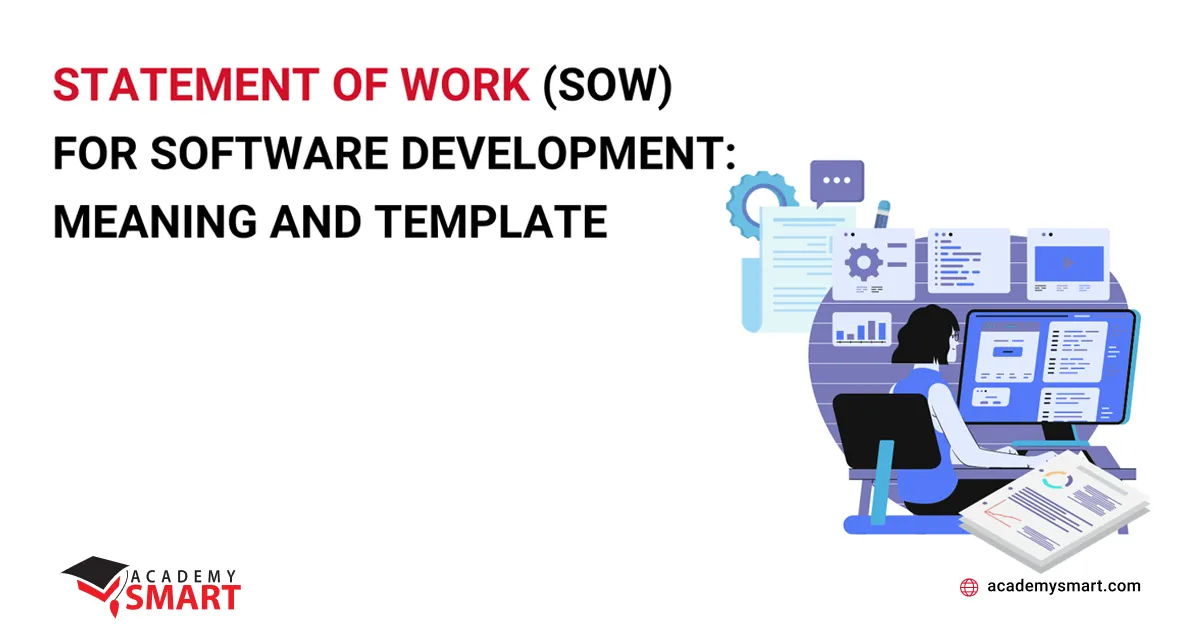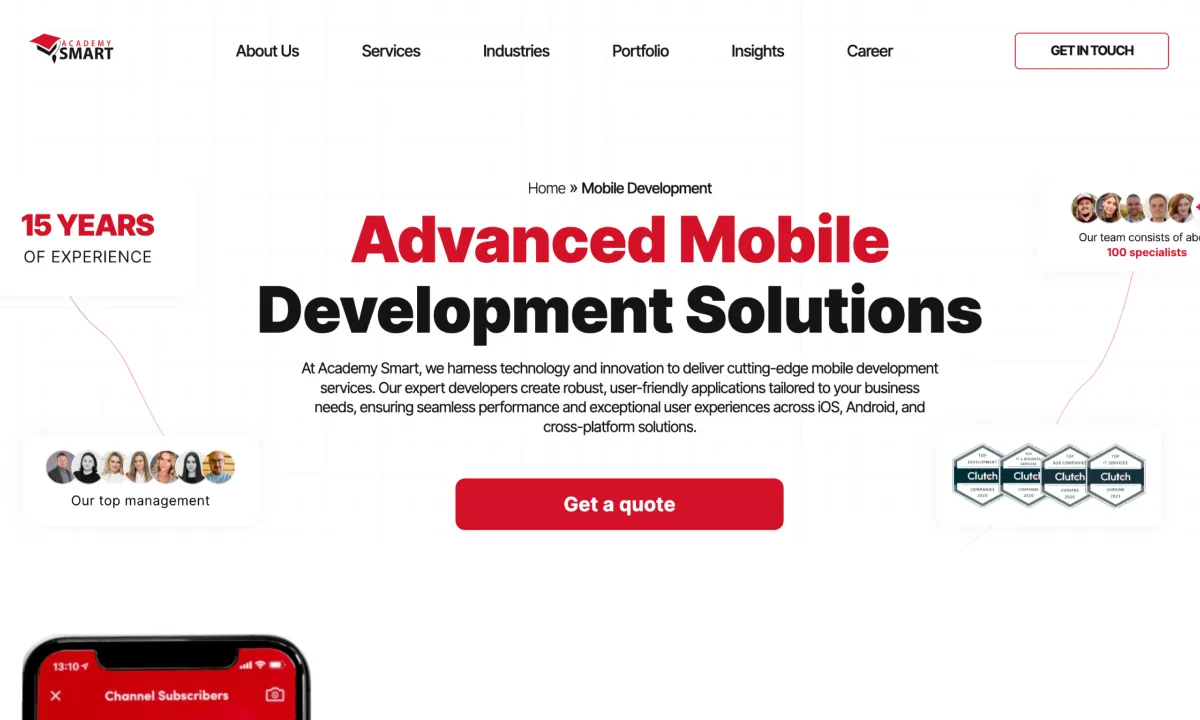
Statement of Work (SOW) for Software Development: Meaning and Template
Contents
A Statement of Work is a fundamental document defining a software development project’s scope, expectations, and deliverables. It acts as the compass that guides both clients and IT service providers, ensuring that everyone shares a common vision, objectives, and timelines. The precision of the SOW’s formulation is essential, underlining its importance in the project management process. This article explores why a Statement of Work is included in the list of must-have documentation for well-run custom application development and what its template usually consists of.
What is a SOW in Software Development
At its core, a Software Development Statement of Work, often called SOW, encapsulates a comprehensive agreement between a client and a software development vendor. This functional document spells out the project’s intricacies, covering various aspects of the collaboration.
An SOW typically consists of:
- an overview of the project;
- the scope of work to be executed by the vendor, including proof of concept (POC), technical specifics, and documentation;
- conditions of collaboration encompassing deadlines, payment terms, and acceptance criteria.
Creating an SOW is a critical precursor to software development projects, setting the stage for a productive partnership between client and vendor. Its primary purpose is to foster transparency and clarity in a software development process. By documenting the project’s objectives, deliverables, work standards, schedule, payment details, and more, the SOW is a common understanding between the customer and developers. In cases where a vendor fails to deliver, the Statement of Work provides a legal basis for the client to demand remedies.
To avoid confusion, it’s essential to distinguish between various project management documents, such as the SOW, software development Contract, and Scope of Work:
- The SOW is a comprehensive document within the Development Services Contract, defining the project’s goals, guidelines, deliverables, schedule, costs, and more.
- The Scope of Work (SoW, also) is a subset of the Statement of Work, concentrating on the methods to achieve the goals laid out in other parts of the SOW.
Making and implementing a Statement of Work typically falls on individuals deeply involved in the project. That can include a Project Manager, Chief Information Officer, or, in some instances, a third-party contractor. Their knowledge of the project’s nuances and goals is essential for crafting an effective SOW.
Compiling a comprehensive tech SOW isn’t merely a formality; it’s a powerful tool with clear benefits:
- First, it eliminates ambiguity, ensuring that the project is executed in line with the client’s vision.
- This document also enhances decision-making by aligning technology-related choices with project objectives.
- Moreover, a Statement of Work acts as a safeguard, providing legal protection for the customer in case of disputes or deviations from the agreed-upon work.
Well-defined SOW is the cornerstone of successful project management, being a robust basis for developing perfect custom software applications like the inspiring ones in the video below.
Software Development Statement of Work: Typical Template
While some formats, types and industry-specific styles of Statement of Work templates in software engineering may vary, certain key elements are always present.
Introduction
The software Statement of Work begins with a clear overview of the project’s objectives. Within this section, we provide vital background information and references to help the development team comprehend the project’s context. It includes a description of all parties involved. Additionally, the creation date and location validate the document’s authenticity.
Purpose
This section elaborates on the ‘why’ of the project. The software development team must grasp the high-level goals, benefits, and reasons behind this undertaking. This context sets the direction for the entire project, ensuring a unified focus on critical objectives.
Scoping and description of work
Within the ‘Scope of Work,’ we dive into the project’s ‘what’ and ‘how.’ It breaks down the assignment into tasks linked to primary development phases, such as project discovery, design, development, and testing. Complex objects may necessitate further subdivision into smaller, manageable steps, reducing the risk of scope creep.
This section should also encompass:
- budget;
- deliverables;
- timelines and milestones;
- technical requirements;
- a list of all individuals involved;
- responsibilities and roles of each participant;
- risk assessment and mitigation strategies;
- conditions for addressing potential issues;
- specifications and limitations.
Location of operations
Whether working with an on-site or remote development team across different countries and time zones, this information clarifies the logistics of collaboration.
SOW standards
In this part, we articulate the technical aspects of the project execution. That includes specifying:
- programming languages and frameworks of technology stack;
- industry standards;
- testing requirements;
- hardware and software prerequisites;
- tools for communication and project management;
- protocols for handling development changes;
- clauses for penalties due to delays or bonuses for extra work hours.
An attentive approach minimizes costly errors and establishes a strong foundation for a successful partnership.
Deadlines and schedule
The section provides a detailed project timeline, including start dates, durations, deadlines, and completion dates. It ensures a smooth project delivery and allows for meticulous monitoring.
This part may also contain the contract’s duration and the allocation of billable hours for the development team, thus helping budget and schedule management.
Monitoring of SOW
For project oversight, this paragraph outlines the frequency of meetings, calls, and progress reviews. It also stipulates utilizing project management applications or time-tracking tools to ensure efficient performance tracking.
Acceptance criteria
Here, we clearly define the criteria that constitute the successful completion of project tasks. This section includes requirements for completed tasks and deliverables, alongside conditions under which the client can terminate the contract due to unsatisfactory performance.
Contract mode and payment model
The software Statement of Work template here details payment terms (project-based, T&M or dedicated team model agreed) and conditions to prevent later disputes.
Miscellaneous
Any additional project-specific details not covered in the previous sections here are clarified. It could involve:
- security standards and regulations;
- code ownership;
- team structure;
- post-project support;
- administrative tasks;
- liability limits and warranties.
This comprehensive practice ensures a complete understanding of the project’s dimensions, minimizing uncertainties that could hinder the project’s success.
Closure
The document’s final part defines the acceptance process for deliverables, detailing who is authorized to carry them and the review and sign-off procedures. It also ensures the completion of all administrative tasks, including document signing, closure, and archiving.
Incorporating these elements into a software development SOW sets the stage for a collaborative and practical project that aligns all stakeholders toward a common goal.

Typical software SOW template’s structure
Why to Choose Academy Smart as Your IT Outstaffing Vendor
Our company specializes in custom software development for enterprise clients. With over 100 highly qualified employees, we build and support complex web, mobile, and cloud applications for various business areas.
For our customers, we offer flexible cooperation models, which include staff augmentation, dedicated development teams, and turnkey software application development. Our programming, quality assurance, and project management experts will gladly share their expertise in your projects. Get in touch to select the appropriate collaboration option.
Frequently Asked Questions: Software Development SOW
What is the difference between a Statement of Work and a software development contract?
A Statement of Work outlines a project’s scope, tasks, and expectations. At the same time, a software development contract is a legally binding agreement that specifies the terms, responsibilities, and payments associated with the application creation described in the SOW.
What are common mistakes to avoid in your example of software Statement of Work?
Common mistakes to avoid include:
- being too vague or overly detailed;
- failing to specify clear acceptance criteria;
- not addressing possible issues or risks;
- neglecting to define a payment and delivery schedule.
Book a free consultation

Reach out to start talking today!











